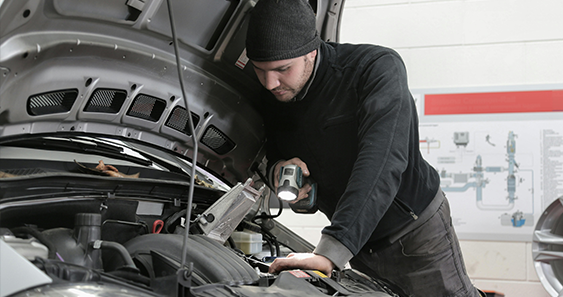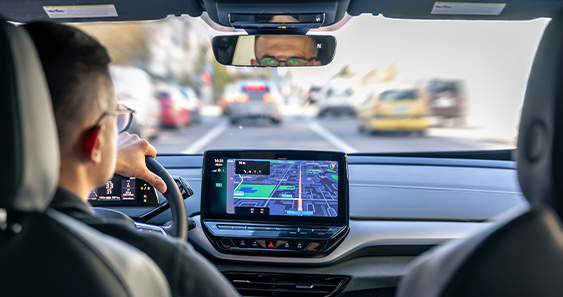ADAS calibration is the process of finely tuning your ADAS systems to ensure that they are working correctly and safely. This article zooms in on questions such as, what is ADAS, and why is calibration important?
What does ADAS mean?
ADAS, or advanced driver assistance systems, are technologies installed in cars to improve driver safety, as well as generally streamline driving.
Primarily, ADAS is designed to reduce the number of car accidents, or reduce the severity of unavoidable ones. Almost all newly made cars have multiple ADAS features, and if your car was built in the last decade or so, your car most likely has at least one feature.
ADAS technologies make use of highly calibrated sensors and cameras, to detect obstacles, drifting, unintentional movements, and some even sense driver fatigue! Using light detection and RADAR, ADAS makes driving safer and easier.
Why do we need ADAS?
We need ADAS for a number of reasons. On top of the general benefits around driver safety and ease of use, we can take a look at the specific features of ADAS:
Adaptive cruise control – Adaptive cruise control is an extension of regular cruise control, an extension that can adjust the speed of your vehicle and apply the brakes if necessary, based on ahead threats and obstacles. This feature is most useful on long journeys, or on motorways.
Lane departure warning systems – Cameras and sensors on your car will detect if you are slowly drifting out of the lane, using software to determine whether or not this is intentional. This system will then alert the driver through a series of beeps and buzzes, or if paired with lane keeping assist, this ADAS will actually automatically correct the movement of the car.
Emergency braking systems – When the sensors detect an imminent collision, or an obstacle around the vehicle, the emergency braking system will apply the brakes at a strength calculated to cause the least damage to vehicle and driver/passenger. Some such systems will take further preventative measures, such as reducing speed slowly, tightening/locking seatbelts, and adaptive steering.
Parking assist – Usually using short range parking sensors, parking assist will tell the driver through beeps when they are too close to the car in front/behind. Some parking assistance systems even automatically park your car for you now!
Blind spot sensors – Sensors detect and alert obstacles in blind spots for the driver.
What is ADAS Calibration?
ADAS calibration involves meticulously adjusting the sensors and cameras responsible for a car’s ADAS. It is especially important after a car has been involved in an incident, or after repairs such as windscreen or wheel replacement.
This is because ADAS is so finely tuned, and requires such a level of accuracy that if sensors and cameras become even slightly inaccurate, the effectiveness and safety of ADAS is reduced massively. Correct calibration ensures that the sensors and cameras are able to accurately assess and detect the surroundings of the vehicle.

Static vs Dynamic ADAS Calibration
ADAS calibration can be performed either statically or dynamically. In short, this means it will be performed either whilst the vehicle is stationary, or whilst it is moving. Whether static or dynamic calibration is suitable for you is dependent on the vehicle and its features.
Static Calibration
Static calibration takes place in a workshop, with the vehicle stationary. Using specialist equipment, a highly skilled Lancashire ADAS technician will establish the ‘thrust line’ of the vehicle using precise equipment, and position the car accordingly.
After this, an array of software and hardware will be used to ensure the vehicle is perfectly calibrated.
Static calibration is usually used for components such as cameras and sensors. It is usually a faster process than dynamic calibration, as well as being less expensive.
Dynamic Calibration
Dynamic calibration calibrates the sensors and cameras whilst the vehicle is in motion. ADAS sensors collect the required information whilst moving through an array of different environmental, speed, and terrain conditions. Based on this data, each ADAS system and sensor is adjusted to ensure optimal performance, increasing safety and ease of use.
Dynamic calibration typically takes longer than static, and costs more money, however it can yield more accurate results, which are specific to the vehicle.
Why is ADAS Calibration Important?
ADAS calibration is vital for improving road safety, and decreasing road traffic accidents (RTAs) across the country. However, without proper education and awareness of ADAS, most features either go to waste, or are not used to their full potential.
Statistics suggest that 86% of drivers have one or more ADAS technology on their car, yet only 18% actually know what ADAS is and how to identify it. Read more about this ADAS awareness study.
To us, this suggests a gap in understanding. ADAS can save both lives and money, but you need to understand what it is and how to utilise it.
Without adequate calibration on your ADAS, the systems may become less safe or effective, which is why ADAS calibration is so important.

